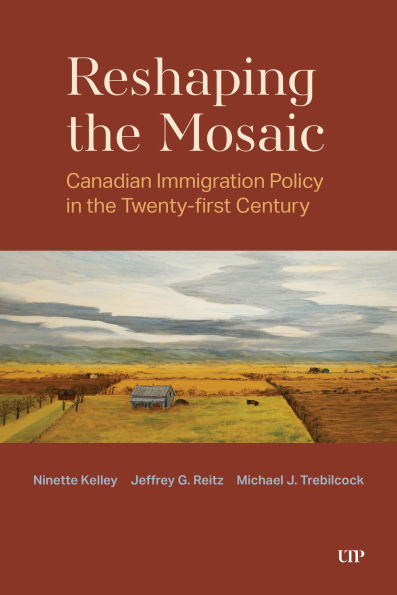Immigration remains a cornerstone of national policy, although it has undergone significant transformations across economic, family, and refugee admission streams in the past two decades. Reshaping the Mosaic offers an insightful exploration of Canada's immigration policy, ranging from its historical roots to contemporary developments.
The book examines the growth in permanent and temporary immigration to Canada. It explores changes in selection criteria and evaluates their impact on key policy objectives: contributing to Canadian economic prosperity, facilitating family reunification, providing refuge for those fleeing persecution, and enabling the integration of immigrants and their descendants into Canadian society. The book sheds light on the legal, political, economic, and social paradoxes inherent in Canadian immigration policy, highlighting shifts in exclusion powers, deportation practices, settlement support, and citizenship rules, as well as their implications for Canadian ideals of multiculturalism, fairness, and integration. It documents the lack of transparency and informed public engagement in policy formation and the implications this lack may have on maintaining public confidence and ensuring that immigration policies align with the national interests.
Driven by a conviction that the contemporary changes in immigration policy need to be examined in a comprehensive and inclusive way, Reshaping the Mosaic looks at recent shifts and their implications for society and offers invaluable insights for policymakers, scholars, and stakeholders, aiming to assist the development of a new immigration policy framework.
Immigration remains a cornerstone of national policy, although it has undergone significant transformations across economic, family, and refugee admission streams in the past two decades. Reshaping the Mosaic offers an insightful exploration of Canada's immigration policy, ranging from its historical roots to contemporary developments.
The book examines the growth in permanent and temporary immigration to Canada. It explores changes in selection criteria and evaluates their impact on key policy objectives: contributing to Canadian economic prosperity, facilitating family reunification, providing refuge for those fleeing persecution, and enabling the integration of immigrants and their descendants into Canadian society. The book sheds light on the legal, political, economic, and social paradoxes inherent in Canadian immigration policy, highlighting shifts in exclusion powers, deportation practices, settlement support, and citizenship rules, as well as their implications for Canadian ideals of multiculturalism, fairness, and integration. It documents the lack of transparency and informed public engagement in policy formation and the implications this lack may have on maintaining public confidence and ensuring that immigration policies align with the national interests.
Driven by a conviction that the contemporary changes in immigration policy need to be examined in a comprehensive and inclusive way, Reshaping the Mosaic looks at recent shifts and their implications for society and offers invaluable insights for policymakers, scholars, and stakeholders, aiming to assist the development of a new immigration policy framework.

Reshaping the Mosaic: Canadian Immigration Policy in the Twenty-First Century
432
Reshaping the Mosaic: Canadian Immigration Policy in the Twenty-First Century
432Related collections and offers

Product Details
| ISBN-13: | 9781487562991 |
|---|---|
| Publisher: | University of Toronto Press |
| Publication date: | 04/30/2025 |
| Series: | UTP Insights |
| Sold by: | Barnes & Noble |
| Format: | eBook |
| Pages: | 432 |
| File size: | 1 MB |
